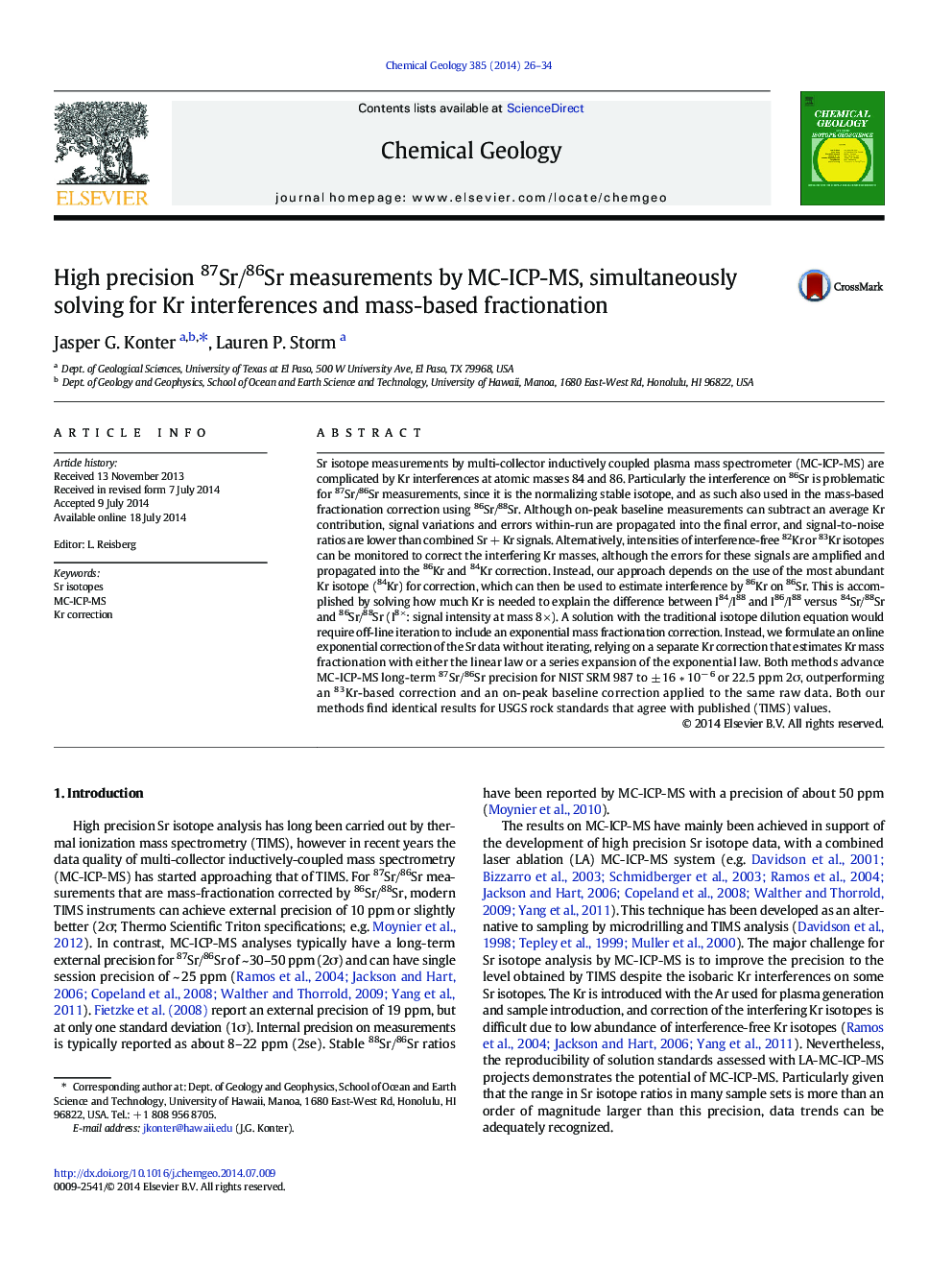| کد مقاله | کد نشریه | سال انتشار | مقاله انگلیسی | نسخه تمام متن |
|---|---|---|---|---|
| 4698710 | 1637587 | 2014 | 9 صفحه PDF | دانلود رایگان |

• 2 methods for online Kr correction in 87Sr/86Sr MC-ICP-MS analysis were tested.
• 87Sr/86Sr of both techniques identical to offline rigorous approach
• Long-term 87Sr/86Sr precision improved to 22.5 ppm.
Sr isotope measurements by multi-collector inductively coupled plasma mass spectrometer (MC-ICP-MS) are complicated by Kr interferences at atomic masses 84 and 86. Particularly the interference on 86Sr is problematic for 87Sr/86Sr measurements, since it is the normalizing stable isotope, and as such also used in the mass-based fractionation correction using 86Sr/88Sr. Although on-peak baseline measurements can subtract an average Kr contribution, signal variations and errors within-run are propagated into the final error, and signal-to-noise ratios are lower than combined Sr + Kr signals. Alternatively, intensities of interference-free 82Kr or 83Kr isotopes can be monitored to correct the interfering Kr masses, although the errors for these signals are amplified and propagated into the 86Kr and 84Kr correction. Instead, our approach depends on the use of the most abundant Kr isotope (84Kr) for correction, which can then be used to estimate interference by 86Kr on 86Sr. This is accomplished by solving how much Kr is needed to explain the difference between I84/I88 and I86/I88 versus 84Sr/88Sr and 86Sr/88Sr (I8 ×: signal intensity at mass 8 ×). A solution with the traditional isotope dilution equation would require off-line iteration to include an exponential mass fractionation correction. Instead, we formulate an online exponential correction of the Sr data without iterating, relying on a separate Kr correction that estimates Kr mass fractionation with either the linear law or a series expansion of the exponential law. Both methods advance MC-ICP-MS long-term 87Sr/86Sr precision for NIST SRM 987 to ± 16 ∗ 10− 6 or 22.5 ppm 2σ, outperforming an 83Kr-based correction and an on-peak baseline correction applied to the same raw data. Both our methods find identical results for USGS rock standards that agree with published (TIMS) values.
Journal: Chemical Geology - Volume 385, 14 October 2014, Pages 26–34